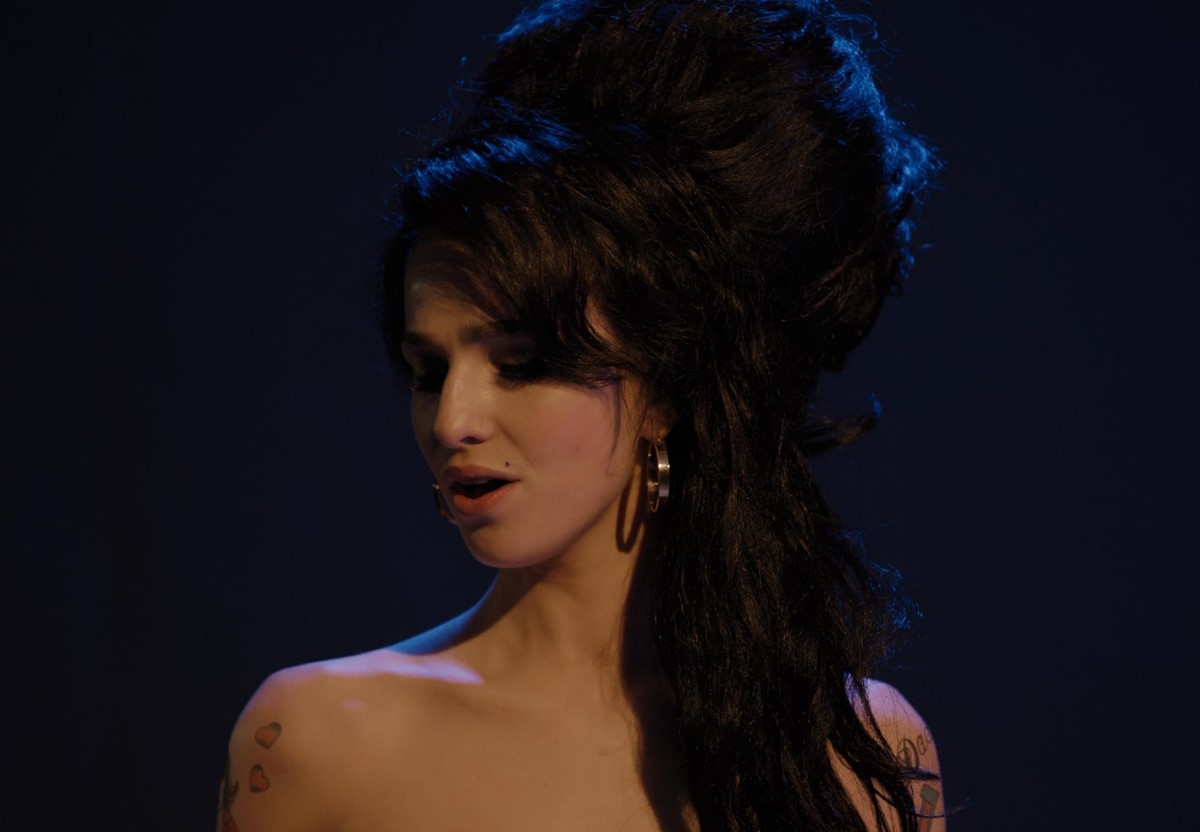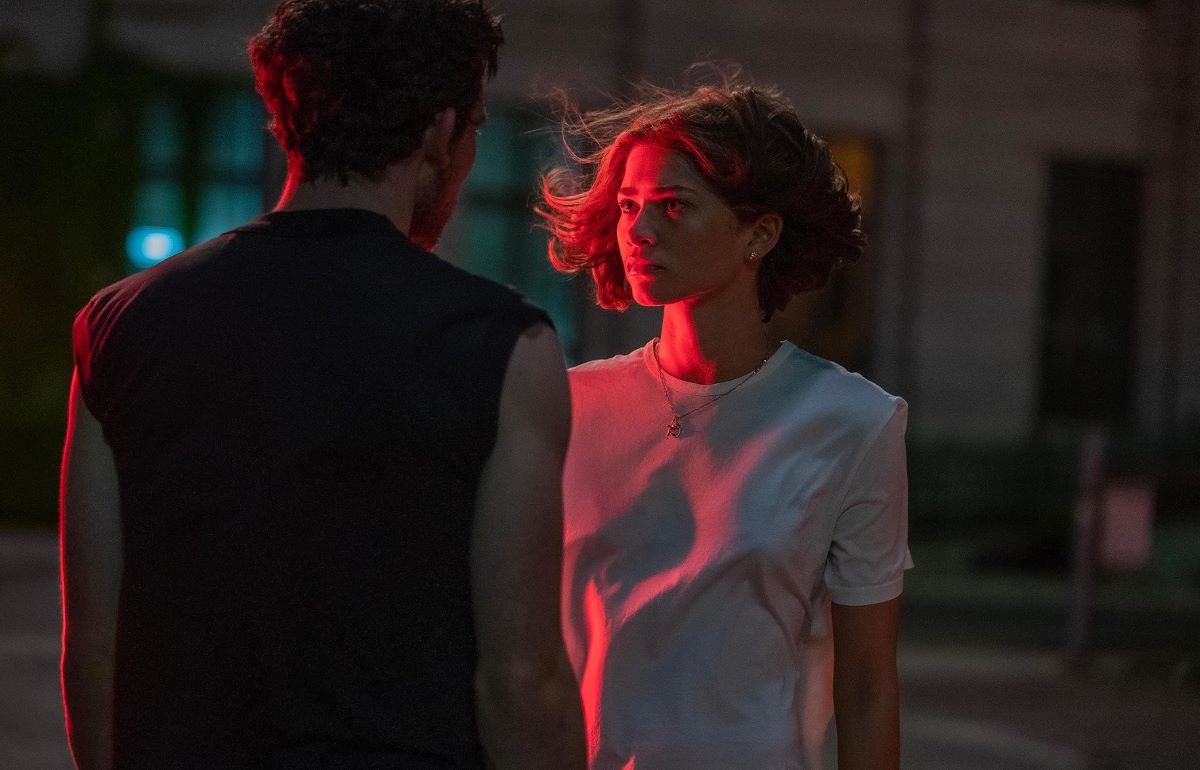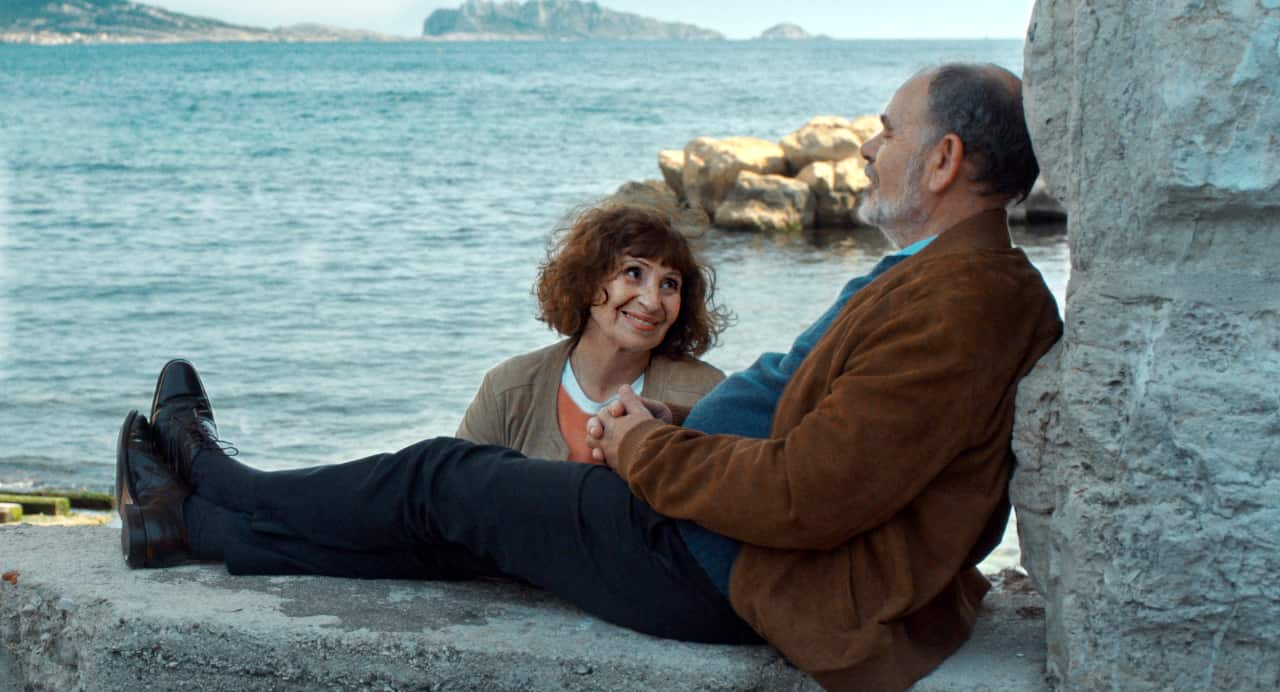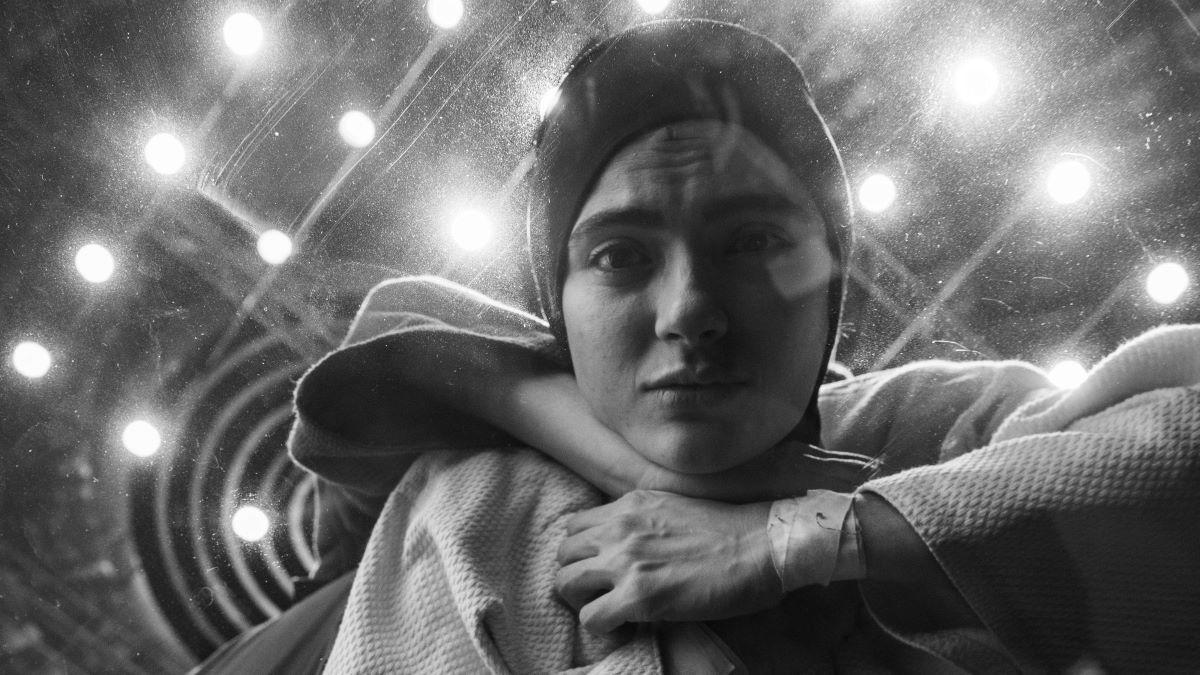by Vincent Canby
For possibly better, but probably worse, we are in the midst of a new zap-plop-stab-splatter era of movie violence of unprecedented explicitness. Not so many years ago, the camera, like a worried friend, used to avert its gaze just before the awful thing happened. In the old Ronald Colman version of A Tale of Two Cities, we watched with a mixture of admiration (for his heroism) and horror (at his fate) while Sidney Carton s neck was fitted into the grooved guillotine chopping block. The camera, however, was ai-ready scanning a peaceful eternity in some painted clouds about the guillotine at the moment the blade whizzed down. Today, who knows?
In Roman Polanski’s Macbeth, we are treated to the extraordinary spectacle of seeing the Thane of Cawdor’s head separated, quite briskly, from its neck, and then go rolling across the cobbles to come to rest in a Glamis gutter. In Harold and Maude, which is supposed to be a comedy in favor of life, the major running gag is a series of extremely realistic suicides that Harold stages to annoy his mother—the most hilarious (that is, if hilarity is to be equated, as I think the movie means it to be, to verisimilitude) being the one in which his mother comes into her bathroom and finds Harold, his throat and wrists cut, lying in a pool of blood in the bathtub.
In Donald Siegel’s Dirty Harry, a well-made, eventually very distasteful movie (which is, I might add, immensely popular), we share (with a psychopathic killer) the view through his rifle’s telescopic rangefinder just before he shoots a pretty girl in a swimming pool and, later, as he aims at a jaunty, purple-shirted black boy, most of whose head he blows away—by some fluke, off-camera.
In Sam Peckinpah’s Straw Dogs, we are voyeurs at a rape that begins as a show of force and becomes a highly erotic encounter session, and, at the end of the film, we participate in the redemption of the hero (Dustin Hoffman) as he wins title to his masculinity by killing or maiming in various ingenious ways a group of country thugs who try to invade his house. In Stanley Kubrick’s A Clockwork Orange, the teenage hero, doing a soft shoe to “Singin’ in the Rain,” cheerily kicks the guts and genitals of a man whose wife he is about to rape.
Not all of these movies I mention are of equal importance. I think, if I had been able to do so without disturbing the people around me, I would have walked out of both Macbeth, and Harold and Maude. I was angry with Dirty Harry, not only with the uses to which it puts its violence, but with its idiotic plot premise. According to this, the San Francisco police are so hamstrung by legal technicalities that they would not only spring the psychopathic killer, but they would let him wander around so free of surveillance that he could eventually kidnap a busload of schoolchildren. The movie is such a ridiculous polemic for Neanderthal law and order that I doubt even the genius of Leni Riefenstahl could make it artistically acceptable.
Also, not all of the violence in these movies is of the same order, but all of it is to a greater—rather than to a lesser—degree unnerving, some for good reasons, some for bad. However, it is only a little more unnerving than the hysterical outbursts this new cycle is bound to prompt from politicians and other opportunists who know that the easiest way to attract attention is to attack movie violence, as if that, and not any number of a thousand other factors, were responsive for the admittedly dreadful state of the world.
Among some professional movie viewers—to differentiate these people from card-carrying critics—a favorite line of reasoning is that movie violence is evil because it instructs in the methods of evil, and, what’s worse, it is boring, although it nevcr seems to occur to them that if something is really boring, then its power to instruct—to seduce—must be minimal.
I am neither a psychiatrist nor a sociologist so I bave no theories about the initial causes and long-range effects of these films, but, as what might be called a professional moviegoer, l’d like to explore some of my own reactions to whats happening.
First off, it seems to me that when we talk about movie violence, we are actually talking about two different kinds of movies, although they do over-lap. We are talking about movies that exploit the excitement and pleasure experienced in the pain of witnessing violence effected by, or received by, a surrogate on the screen. We also are talking about movies that seriously attempt to analyze the meaning of violence and the social climate that tolerates it. Peckinpah’s The Wild Bunch and, to a lesser extent, his Straw Dogs are among the better examples of the former, while A Clockwork Orange is a superlative example of the latter. Dirty Harry, which invites us to become a rooftop sniper, is an absolutely perfect example of the first kind of violent movie, designed to transform all of us into surrogate rats.
In his excellent, small but comprehensive book, Violent America: The Movies 1946-1964 (published by the Museum of Modern Art), Lawrence Alloway refers to the experiments conducted by Leonard Berkowitz, who found that people subjected to violent stimuli on the screen were not—as the catharsis theorists would have you believe—drained of aggressive inclinations, but were more likely to exhibit symptoms of hostile behavior.
Alloway goes on to say: “We are now historically in the position of facing the possibility that violence in all the arts is a non-cathartic spectacle. In fact, since the sixteenth century the idea of catharsis has been strained to accommodate ever rougher and more specific incidents…. The paradox of taking pleasure in pain is a recurrent and unsettled topic of literary and dramatic criticism. The movies, so often most fully visualized and articulate when the subject is violent, are centrai. . .
Earlier in his long essay, Alloway has pointed out that there still is no conclusive evidence relating the viewing of movie violence to subsequently committed violent acts. As he, and others, have emphasized, the viewing of movies, especially today, constitutes such a small part of the stimuli received by any individual that to freight movies with the responsibility for every-thing from antisocial behavior to civil disorders, political unrest and general apathy is ludicrous.
Nevertheless, something is happening in this land, and movies are very much a part of the scene, though, it seems to me, they reflect attitudes much more than they set them.
What we are being treated to in today’s violent films is not only the methodology of crime, which doesn’t particularly bother me (if someone wants to rob a bank or mug a helpless old man, he probably won’t rely on a movie to tell him how). More important, we are being given, whether we like it or not, representations of the physical effects of violent behavior that surpass anything that, hopefully, any of us should ever have to witness.
Through the wizardry of the special-effects men, we see heads lopped off, bullets passing through (not just into) bodies, people burning themselves up, and, in Dirty Harry, a little schoolboy slapped around by the crazy killer. Even in the bad, last, hypocritical days of the Production Code, we usually knew how things would turn out generally, and it wasn’t often that we were surprised—and almost made ili—by a shotgun going off in someone’s face onscreen.
A lot of this is just bad drama (you wonder—if you can distance yourself from the gore—how the trick was rigged), but it is also, over the long run, guaranteed, I think, to make us all a little more callous. I’m speaking here of movies that, for me, could not support the violence they show. There are some, however, that can, but everyone has his own tolerance level.
Straw Dogs is not, for example, my favorite movie, but it is an intelligent one, and one that comes dose to supporting the mayhem with which it is so explicitly concluded. The bloodshed in The Wild Bunch was—like it or not —exciting, stimulating, but it was removed in time and place. It was practically a fairy tale. Straw Dogs is not. It has the shape of a Western narrative, but the contemporary setting (the Cornish coast of England today) gives it an immediate reality that transforms the ending into something like high-class butchery. My reactions passed from concern, to revulsion, to something on the order of so-what? It became ridiculous.
The violence in A Clockwork Orange is, by comparison, practically poetic —not (in spite of everything you’ve heard) as explicit as anything in Straw Dogs or Dirty Harry or even Macbeth. It is a horror show, but cool, so removed from reality that it would take someone w ho really cherished his perversion to get any vicarious pleasure from it. To isolate its violence is to ignore everything else that is at work in the movie, including its extraordinary soundtrack (music and narration), the manner of its photography (which is very special), the editing, and the concem of the movie—which is nothing less than the fate of mankind.
One of the reasons, I think, that movies keep pressing the outer limits of acceptability is that although they are, on their visual surface, realistic, they use up realistic actions so quickly that the actions become as unreal as the formal gestures of a ritual. People once were shocked when gangsters in movies of the thirties shot people on screen, and the victims doubled up, as if they had suffered sudden heart attacks. Not much blood, but death was apparent.
We in the audience eventually saw the make-believe in the drama. The shootings had to become more vivid to impress us, to excite us and—whether we like to believe it or not—to give us pleasure. Now that the explicitness has gone almost as far as it can go, it may be that the margins of pleasure have been exceeded. 1 would hope so for my own future and that of everyone I know.
It may be about time for movies to realize that they aren’t realistic. They are, for all the reality of their locales and of their actors and of their circumstances, only representations of reality and nothing more. By showing us how a man looks when his head is chopped off, a movie can capture our shocked attention for a second or two, but it has said very little about the nature of man we didn’t already know, and absolutely nothing about the nature of the poor man who was the victim—except that he died, violently.
January 6, 1972
* * *
by Vincent Canby
“This is where I live,” says David (Dustin Hoffman), the ordinarily loving, mild-mannered mathematician, to the thugs who want to invade his home. “This is me! I will not allow violence against this house!”
That pronunciamento, which sounds very much like the sort of thing that mild-mannered professors used to say in pre-Pearl Harbor, anti-Nazi films, as well as like the sort of thing that mild-mannered homesteaders still say in certain kinds of Western dramas, is not all there is in Sam Peckinpah’s Straw Dogs. However, it comes close to being the entire point of Mr. Peckinpah’s first non-Western—a contemporary melodrama set on the Cornish coast of England. And this is, I think, a major disappointment. When a movie can be summarized so easily, why make a movie at all? Why not release a greeting card instead?
After ninety minutes of filmed equivocation, during which David’s cat has been strangled and hung in his closet, and his wife, Amy (Susan George), has been raped (not entirely against her will), David decides to make a stand when five local toughs try to enter his cottage. They want to carry off the local idiot (David Warner), suspected of molesting a teenage girl who (and this is important in Peckinpah’s view of the world, and of women, too) asked to be molested in the first place.
For the next thirty minutes, David, the turned-worm, defends his home by, among other things, helping to shoot off one man’s foot, heaving boiling oil (or is it vinegar?) in the faces of a couple of others, by throwing an antique man-trap around the neck of a fourth, and, at last, by persuading the fickle-hearted Amy to shoot the fifth through the chest with a shotgun.
Curiously enough, it’s not really the violent climax that is objectionable about Straw Dogs. Although it is extremely explicit, it does serve a dramatic function in a film that seriously attempts to define the meaning of manhood in such terms. However, I was more than a little surprised by the poor quality of either the staging of or the editing of this final sequence, which results in total confusion as to who is doing what to whom and where, at any given moment. In movies about besieged fortresses, we always have a right to know where we are, and how the ammo supply is holding out.
A much greater problem with Straw Dogs is that nothing in the screenplay supports this extraordinary finale with conviction. Hoffman’s David is a nice, clean-cut intellectual who, we are told early on, has refused to take stands, to be committed to anything, and from the way he treats his wife (“Amy, I love you, but I want you to leave me alone”) it’s apparent that he’s an embryo of one of those old-fashioned Western heroes to whom women are a necessary but lesser breed of being.
It is, further, very difficult to accept the quality of the hostility that greets the American mathematician and his English wife in the tiny Cornish community. It is, in fact, the kind of hostility that might be perfectly acceptable on a Western frontier but doesn’t work very easily in a contemporary drama that pretends to be otherwise so realistic.
Even more difficult to accept in a contemporary setting is the almost Eve-like portrayal of women. Oddly, the best performance in the film is given by Miss George, who looks like a lovely young spin-off of Susannah York, yet I suspect this may be because the role is written with so much more venom, and contains the kind of contradictions that make characters interesting to watch.
Perhaps the toughest—and most erotic—scene in the film is the one in which she is raped by one of the thugs, an old boyfriend, an encounter that begins with the exercise of force and ends with the woman’s complete and willing submission. This will not, I imagine, endear the director to something over half of this country’s population.
Mr. Peckinpah has made some good films (Ride the High Country) and a couple of great films (The Wild Bunch, The Ballad of Cable Hogue)—which may be why Straw Dogs is a special disappointment. It is an intelligent movie, but interesting only in the context of his other works. His philosophy somehow belongs out West, either in the great spaces inhabited by Cable Hogue, or in those areas where the frontier is slowly being corrupted by civilization. I can’t quarrel with the point of Straw Dogs. There are times when a man must take a position and maintain it. But the manner in which Dustin Hoffman, on the Cornish coast of England, does it reminds me of someone protecting his Jaguar with a flintlock.
New York Times, January 20, 1972




